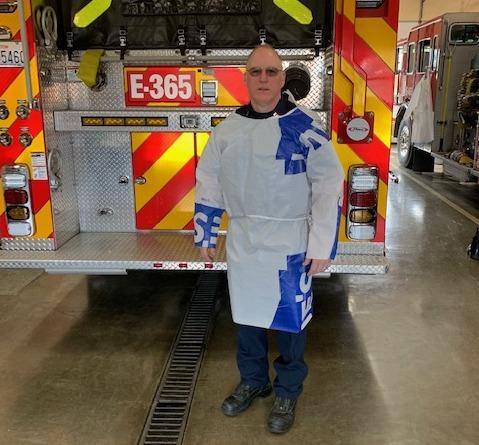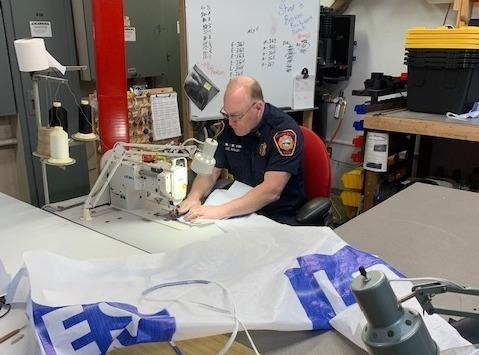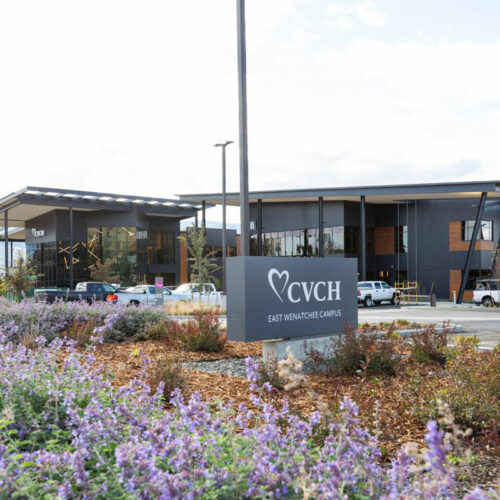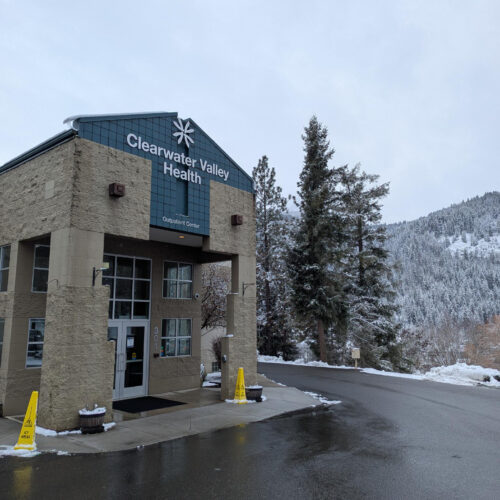
Washington Tries Out Tyvek House Wrap As Alternative For Critically Scarce Protective Gowns
READ ON
Protective surgical gowns are one of the most scarce and eagerly sought items in the current coronavirus pandemic. Responders-turned-MacGyvers in at least three separate places, including two in Washington state, have independently hit upon a do-it-yourself alternative using common construction house wrap.
Washington state’s COVID-19 emergency management center has 10 million gowns on backorder for distribution to first responders, hospitals, long-term care centers and health clinics. But with the resupply date unknown for agencies burning through their current stockpiles of personal protective equipment (PPE), backup plans are needed. Gowns protect the wearer from spatter or contamination.
The Chelan-Douglas Health District in Wenatchee tweeted out a fabric pattern for a medical gown on Thursday with a call to citizens to sew to “help protect those working on the frontlines of COVID-19 response.”
“There is currently a critical need for homemade gowns,” the instructions said. “The donations of homemade masks has been great, however, the priority now is to obtain homemade gowns.”
In Federal Way, Washington, South King Fire & Rescue leaders were watching their supply dwindle, when one of them remembered once seeing Tyvek used as a poncho.
“I started thinking about what fabrics we would have readily available to us and I started thinking about Tyvek,” Lt. Jan Nielsen said in an interview Friday. “It sheds water. It’s pretty lightweight, fairly disposable and would sort of meet the intent of what that surgical gown is providing us.”
Nielsen shared his idea with fellow firefighter Jim Wilson, the in-house sewing expert, who created a prototype Tyvek gown. Wilson has since moved into regular production as time permits using a sewing machine set up next to his assigned fire engine. He cuts up rolls of vapor barrier house wrap donated by a local Lowe’s home improvement store.

Driver-Engineer Jim Wilson sews a Tyvek gown at a Federal Way, Washington, fire station. CREDIT: South King County Fire and Rescue
As word spread about the alternative gown, the South King Fire & Rescue department filmed a how-to video to answer the growing requests for instructions for crafting with moisture barrier material that is stiffer and noisier than the synthetic fabric used in medical-grade surgical gowns.
“I hope this works out for everybody. It’s working out for us,” said Wilson after stitching together a complete Tyvek gown in around ten minutes on the freshly-posted video.
Meanwhile on the Olympic Peninsula, a former state representative who remains active on emergency preparedness issues independently stumbled upon the same idea. Jim Buck noticed a roll of Tyvek laying around from a house project years ago and his mind made the connection to the shortage of PPE.
“We know it isn’t the optimal solution, but it will work,” Buck said by telephone from his home near Joyce, Washington.
Buck started emailing with the Washington State Emergency Management director and state Department of Labor and Industries to promote the Tyvek gown and see if it could be OK’d for use as stop-gap protection in non-sterile, non-surgical settings.
Volunteers overseen by Clallam County Emergency Management are already sewing gowns with donated cotton fabric and could potentially branch out into Tyvek gowns, Buck said. Given the virus-induced slowdown in construction, house wrap material is in ample supply.
Buck learned the U.S. Food and Drug Administration and federal Centers for Disease Control agree the shortage of medically-certified gowns creates a need to improvise.
“FDA recognizes that when alternatives, such as FDA-cleared gowns, other surgical apparel, and/or gloves, are unavailable, individuals, including healthcare professionals, might improvise personal protective equipment,” a guidance letter published in March said. “FDA does not intend to object to individuals’ distribution and use of improvised PPE when no alternatives, such as FDA-cleared gowns, other surgical apparel, and/or gloves, are available.”
In Tennessee, state prison inmates began making gowns out of Tyvek in late March. As in the case of the suburban Seattle fire department, Lowe’s donated the raw material. The Tennessee Department of Correction said inmates at its West Tennessee State Penitentiary can produce more than 200 gowns per day, which are being shipped to the state emergency management agency for distribution to medical facilities.
State prison inmates at the Coyote Ridge Corrections Center near Connell, Washington, started making protective gowns last month too, but they are utilizing nylon fabric.
At the Federal Way fire station, Lt. Nielsen said as proud as he was about the improvised Tyvek gowns, he hoped not to have to use them on real emergency calls.
“It’s a last case resort for us,” Nielsen said. “We are going to use what we are supposed to use for as long as possible, for as long as we have it. Hopefully, we get more medical gowns in. But if not, we want to have a plan.”
Related Stories:

Proposed Medicaid cuts threaten rural healthcare in Washington, experts warn
CVCH East Wenatchee behavioral medicine building, right, approaches completion with mostly interior work to be finished Tuesday, Oct. 29, in East Wenatchee. (Credit: Jacob Ford / Wenatchee World) Listen (Runtime

Regence patients could lose coverage at local hospitals, cancer clinic
Two hospitals serving mostly rural areas in Idaho could become more expensive for patients with a major health insurance provider.

Bones and pipes are breaking across the Northwest with the cold, and now the warm up
An icy parking lot near Brighton, Oregon. Many people have fallen, or had pipes burst in the cold and icy weather. (Credit: Tracci Dial / NWPB) Listen (Runtime :57) Read















